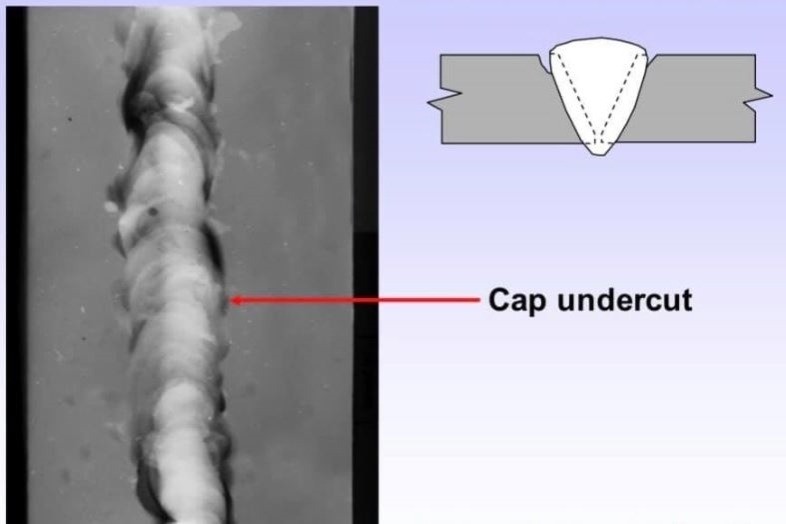Crucial Tips for Welders: Avoiding Undercut Welding and Ensuring Stronger Weld Joints
In the realm of welding, achieving strong and durable weld joints is the foundation of creating top quality work. One usual difficulty that welders commonly experience is undercut welding, which can compromise the honesty of the weld joint.

Comprehending Undercut Welding
Undercut welding is an usual welding problem that takes place when the weld metal stops working to correctly load the groove and leads to a groove-like clinical depression along the weld bead. This flaw weakens the weld joint, making it prone to fracturing and failure under anxiety. Undercutting can be triggered by numerous factors, including too much welding current, high welding speed, incorrect electrode angle, wrong electrode size, and bad welding strategy.
Among the main reasons for undercut welding is an inequality in between the welding current and the welding speed. If the welding current is also high or the welding rate is too fast, the weld metal might not adequately fill the groove, causing damaging. In addition, using an electrode that is too large can lead to a comparable end result, as the excess steel can not effectively flow into the groove.
To stop undercut welding, welders must guarantee they are using the proper welding criteria, maintain a suitable electrode angle, choose the appropriate electrode size, and practice proper welding techniques. By dealing with these elements, welders can lessen the danger of undercutting and produce stronger, much more reputable weld joints.
Appropriate Welding Method
Effective welding method plays a vital function in ensuring the top quality and honesty of weld joints. One fundamental facet of appropriate welding technique is keeping the right angle and distance in between the welding gun and the work surface.
Furthermore, a stable and regular hand motion is essential for developing strong and sturdy weld joints. Welders ought to intend for smooth, uniform activities to guarantee also distribution of the weld product. Proper adjustment of the welding gun and filler material is additionally essential to attaining optimum penetration and combination.
Furthermore, managing the heat input and choosing the ideal welding parameters based upon the product being welded are important elements in attaining top quality welds - Preventing weld undercut. Welders must comply with the advised settings offered by welding treatment requirements and adjust them as needed based upon the details requirements of the job. By understanding correct welding techniques, welders can substantially boost the toughness and reliability of their weld joints
Selecting the Right Electrode
Preserving the proper angle and distance between the welding gun and the workpiece is essential when thinking about the relevance of picking the right electrode in welding applications. The selection of electrode plays a crucial role in identifying the high quality and toughness of the weld joint. Electrodes can be found in numerous kinds, each created for certain objectives and products.
First of all, choosing the suitable electrode diameter is important. Thinner electrodes appropriate for welding thin materials, while thicker electrodes are much better for thicker products and greater warm applications. Matching the electrode diameter to the density of the work surface assists accomplish a balanced weld.
Second of all, recognizing the product make-up of the electrode is crucial. Different electrodes are developed for welding particular materials like steel, stainless steel, light weight aluminum, or cast iron. Making use of the right electrode material guarantees good blend and decreases the danger of problems in the weld.
Lastly, considering the welding placement and strategy is vital when selecting the electrode type. For example, specific electrodes are better matched for upright or overhead welding positions, while others function well for level or horizontal placements. Picking the best electrode based on the welding method enhances the total weld high quality and integrity.
Preparing the Base Steel
To make sure an effective welding process, what preliminary actions should be taken when preparing the base steel for welding? Additionally, any type of existing weld product or deposit from previous welding ought to be gotten rid of to make sure a tidy surface area for the brand-new weld.

Conducting Post-Weld Inspections

After performing these analyses, welders have to contrast the results against industry standards and task needs to make sure that the weld joint satisfies all required criteria. Any insufficiencies or variances found during the post-weld inspection needs to be immediately dealt with through appropriate see this site rehabilitative procedures to ensure the weld's integrity. By faithfully doing post-weld evaluations and promptly resolving any type of issues, welders can promote the high quality and reliability of their job, ultimately adding to the security and long life of the welded frameworks.
Final Thought

In verdict, avoiding undercut welding and making certain stronger weld joints call for a combination of correct welding method, picking the best electrode, preparing the base steel correctly, and performing post-weld inspections. By recognizing the causes of undercut welding and carrying out the necessary safety measures, welders can generate premium weld joints that fulfill industry requirements and make certain the structural stability of the bonded components.
Undercut welding is a typical welding issue that occurs when the weld metal falls short to properly fill up the groove and results in a groove-like clinical depression along the weld grain (Preventing weld undercut). Undercutting can be triggered by numerous factors, including extreme welding existing, high welding rate, improper electrode angle, incorrect electrode size, and bad welding strategy
One of the main reasons for undercut welding is a discrepancy in between the welding existing and the welding rate. If the welding current is also high click for more info or the welding speed is too quick, the weld steel might not effectively fill up the groove, leading to damaging.Keeping the proper angle and range in between the welding gun and the workpiece is fundamental when thinking about the value of picking the appropriate electrode in welding applications.